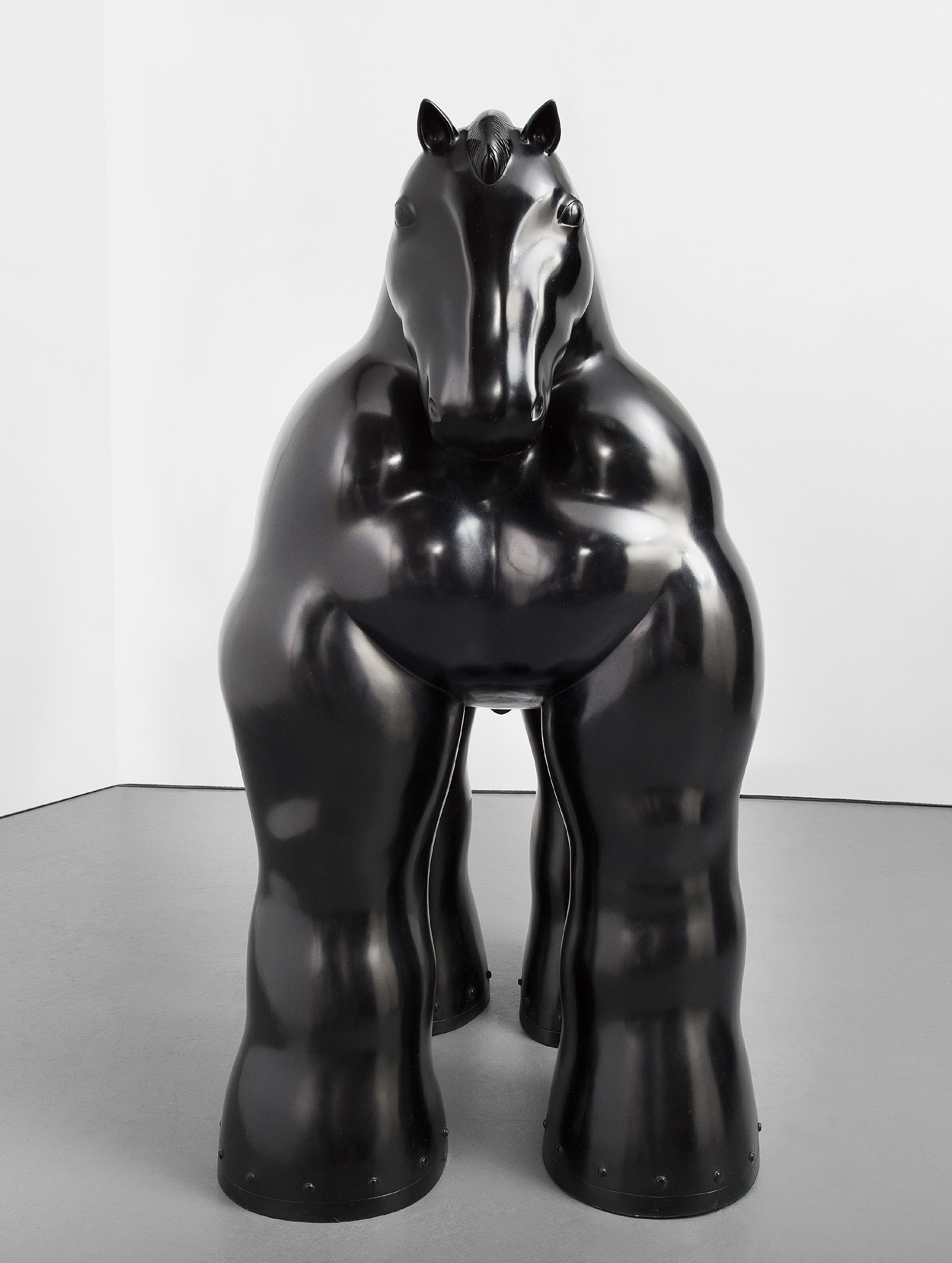



179
Fernando Botero
Horse
Full-Cataloguing
Though he had already begun experimenting in sculpture in the 1960s, it was only in the 1970s that he began to pursue it in in depth. Fusing his own unmistakable style with the craft of sculpting he learned while travelling to Europe, Botero set up a studio in Pietrasanta, close to the marble mountains of Carrara famous for its rich tradition and history of sculpture that, in 2012, presented another example of Horse in its town square. Pietrasanta is home to the world’s finest bronze foundries, patronized by artists such as Jeff Koons, Joan Miró and Henry Moore, underscoring Botero’s commitment to the classical sculpture tradition in the creation of his immaculate bronze casts.
With its swollen limbs and surrealistically monumental scale, Horse appears to specifically pay homage to The Battle of San Romano by the Renaissance artist Paolo Uccello to elegize the Florentine victory over Sienna. “Certainly his relish of (perspective) is sensual and formal: a carnival of exteriors, of spherical horses’ bottoms and tubular armored limbs, with little hint of the interior world,” Jonathan Jones wrote on the subject of the painting, yet the observation is equally apt in regard to Horse (Jonathan Jones, “The Violence of Spring: Paolo Uccello’s The Battle of San Romano”, The Guardian, April 10, 2012, online). Evoking the enormous, three-dimensional horses crowding the foreground in the battle scene in a hallucinatory exaggeration of perspective, Botero celebrates the animal through colossal, nearly comedic proportions. Uccello interpreted form as sculptural, even geometric, and his horses possess a physical immediacy shared by Botero’s sculpture as light reflects off the gleaming curves of its hermetically sealed bronze cast.
Horse is characteristic of Botero’s ability to meld diverse varieties of style into his own baroque, satirical aesthetic universe, including the heavy, solemn animals found in early Egyptian art and the anthropomorphic stone sculptures of ancient American cultures. The polished bronze cast and mesmerizing rotundity of Horse elicit comparisons to Henry Moore’s enigmatic bronze sculptures of animals and nude women, which were cast at the same foundries in Pietrasanta. Like Moore, Botero’s sculptures, as Mariana Hanstein noted, “emanate something of the cultic. The colossal female nudes are reminiscent of prehistoric fertility idols, his monumental animals of sphinxes or of the figures guarding the entrances to the temples of the ancient world” (Mariana Hanstein, Fernando Botero, Cologne, 2003, p. 89)
While invoking the mythical sublime, Botero’s Horse is sculpted with an affectionate reverence for its status as man’s timeless companion and friend. As the critic Edward Sullivan put in a nutshell, “Botero's use of the figure of the horse is something akin to Cervantes' use of the nag Rocinante in Don Quixote. Downtrodden and worn out, the horse is the constant companion of man in his journeys and travails. In reading Cervantes' great novel, we increasingly feel the author's affection for the horse. Botero's equally affectionate evocations of all his various animals remind us that he thinks of these creatures as integral to his own personal universe" (Edward J. Sullivan, Botero Sculpture, New York, 1986, pp. 135-137). In Botero’s focus on the horse motif, we can trace a larger preoccupation with the Spanish literary and cultural tradition in the artist’s body of work, reflected in his depiction of intrinsically Spanish pastimes and figures ranging from bull fights to conquistadores. These themes are deeply related to his sumptuous formalism, which pays homage to the tradition of baroque Old Master painting rather than modernist innovations – in his sensual volume, a conscious communion with the baroque naturalism of Diego Velázquez and the romanticism of Francisco de Goya becomes apparent. In Horse, Botero celebrates the iconography of the storied Spanish tradition as translated through his signature Boterismo.
Fernando Botero
Colombian | 1932Colombian artist Fernando Botero is known for his voluptuous and exaggerated paintings, sculptures and drawings. He studied under Roberto Longhi, a renowned authority on Italian Renaissance and Baroque art, obtaining a remarkable art historical knowledge of Western Classicism. This dialogue between an erudite education and religious art for the masses is the key in the development of his aesthetic.
Botero was also influenced by Mexican muralism, with which he became acquainted while living in Mexico City. The monumental scale of the human forms in the murals gave rise to the voluminous figures for which he is best known. Botero's works make mordant comments on society's shortcomings; they also incorporate classical elements and are imbued with political satire and caricature.